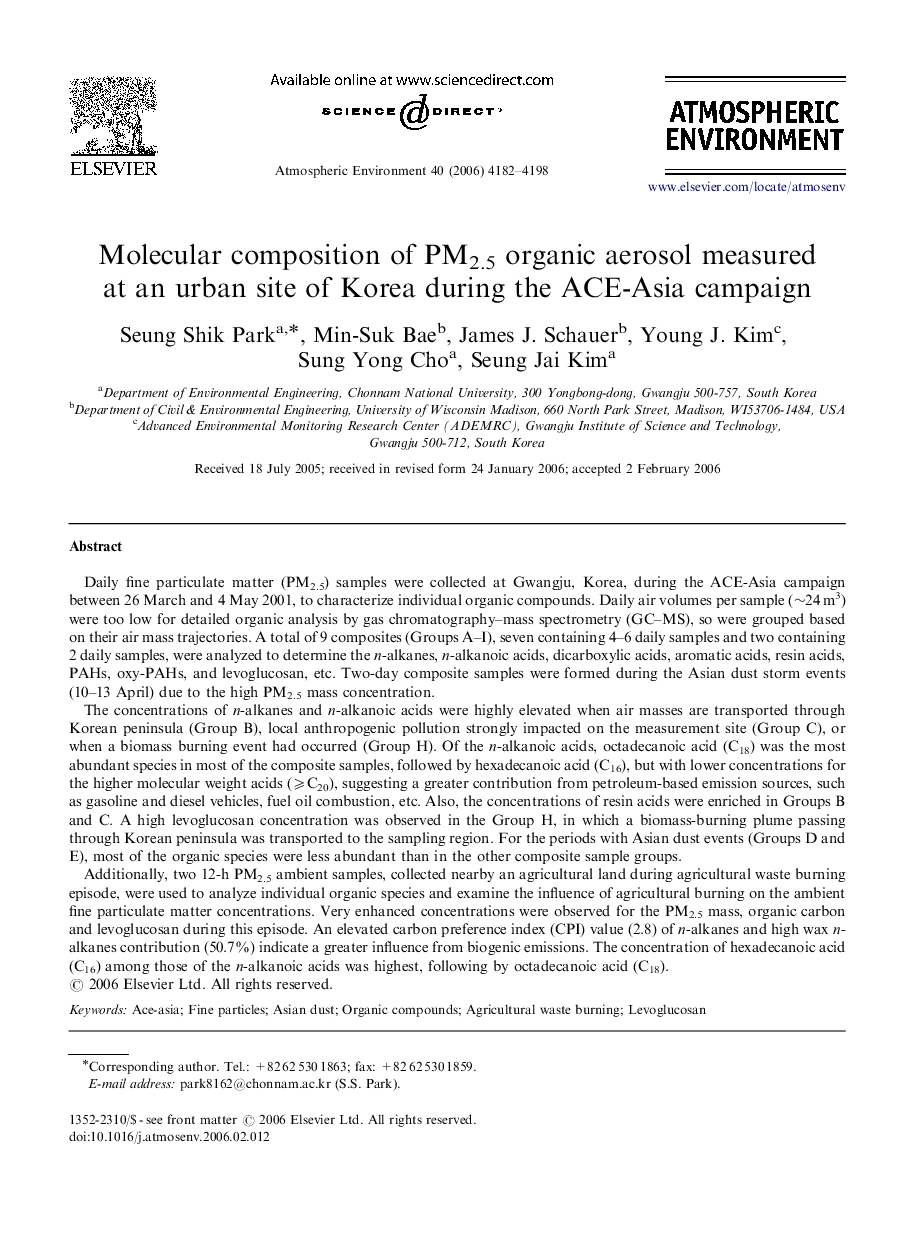| Article ID | Journal | Published Year | Pages | File Type |
|---|---|---|---|---|
| 4443980 | Atmospheric Environment | 2006 | 17 Pages |
Daily fine particulate matter (PM2.5) samples were collected at Gwangju, Korea, during the ACE-Asia campaign between 26 March and 4 May 2001, to characterize individual organic compounds. Daily air volumes per sample (∼24 m3) were too low for detailed organic analysis by gas chromatography–mass spectrometry (GC–MS), so were grouped based on their air mass trajectories. A total of 9 composites (Groups A–I), seven containing 4–6 daily samples and two containing 2 daily samples, were analyzed to determine the n-alkanes, n-alkanoic acids, dicarboxylic acids, aromatic acids, resin acids, PAHs, oxy-PAHs, and levoglucosan, etc. Two-day composite samples were formed during the Asian dust storm events (10–13 April) due to the high PM2.5 mass concentration.The concentrations of n-alkanes and n-alkanoic acids were highly elevated when air masses are transported through Korean peninsula (Group B), local anthropogenic pollution strongly impacted on the measurement site (Group C), or when a biomass burning event had occurred (Group H). Of the n-alkanoic acids, octadecanoic acid (C18) was the most abundant species in most of the composite samples, followed by hexadecanoic acid (C16), but with lower concentrations for the higher molecular weight acids (⩾C20), suggesting a greater contribution from petroleum-based emission sources, such as gasoline and diesel vehicles, fuel oil combustion, etc. Also, the concentrations of resin acids were enriched in Groups B and C. A high levoglucosan concentration was observed in the Group H, in which a biomass-burning plume passing through Korean peninsula was transported to the sampling region. For the periods with Asian dust events (Groups D and E), most of the organic species were less abundant than in the other composite sample groups.Additionally, two 12-h PM2.5 ambient samples, collected nearby an agricultural land during agricultural waste burning episode, were used to analyze individual organic species and examine the influence of agricultural burning on the ambient fine particulate matter concentrations. Very enhanced concentrations were observed for the PM2.5 mass, organic carbon and levoglucosan during this episode. An elevated carbon preference index (CPI) value (2.8) of n-alkanes and high wax n-alkanes contribution (50.7%) indicate a greater influence from biogenic emissions. The concentration of hexadecanoic acid (C16) among those of the n-alkanoic acids was highest, following by octadecanoic acid (C18).
